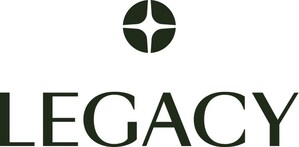WASHINGTON, Jan. 15, 2014 /PRNewswire-USNewswire/ -- A new study reveals some of the advertising tactics being used by tobacco and e-cigarette companies to market "emerging" products, such as e-cigarettes, snus, dissolvables, and chew. Recent research on tobacco advertising has generally focused on point-of-sale (POS) and retail displays, rather than other mediums such as magazines and direct mail. The study published today in the Nicotine and Tobacco Research Journal by Legacy® - a national public health nonprofit located in Washington, D.C. - is the first to address that scholarship gap by conducting surveillance of and examining non-point of sale advertising of noncombustible tobacco products (NCPs).
(Photo: http://photos.prnewswire.com/prnh/20101101/DC86294LOGO)
As restrictions and taxes continue to increase on combustible tobacco products (cigarettes, loose tobacco, cigars), and as FDA regulation of tobacco is implemented, noncombustible tobacco products have the potential to become an increasingly large segment of the U.S. tobacco market. NCPs can broadly be put in two categories: smokeless tobacco, which includes traditional products such as chew and snuff as well as newer, emerging products such as snus and dissolvables; and aerosolized products, or e-cigarettes, which use nicotine vapor inhalation to mimic the behavioral and sensory characteristics of cigarettes, and are also promoted for use when one cannot smoke traditional tobacco, or as a quitting aide.
Two advertising firms were used to systematically collect all U.S. advertisements for NCPs during a three-month period in 2012. A total of 231 unique consumer-targeted ads for NCPs were identified during this time period. Some key findings include:
- In total, roughly $20 million was spent advertising NCPs in the U.S. between June 1 and September 1, 2012.
- The largest portion of these advertising dollars was spent on direct mail ads -- primarily for smokeless products. This advertising channel is estimated to reach more than 25 million households. Approximately 90% of the mailings including promotional offers or price discounts.
- The greatest spend was on snus advertising – more than $9.6 million. Camel Snus was the most heavily advertised product among this group. Direct mail, most of which included promotional coupons, was the primary advertising channel for snus-related promotions.
- E-cigarette ads were the most widely circulated; with the products primarily advertised through print, and television (television is a medium off- limits to advertisements for traditional tobacco products).
- Although there were a higher number of unique ads for smokeless products as compared to e-cigarettes, e-cigarette ads had the highest number of observations. This can be mainly attributed to the 862 televised airings of ads for blu brand e-cigarettes. Ads for blu aired on a wide variety of national cable channels including the Outdoor Channel and the Weather Channel and on local TV stations in markets across the country, including Pittsburgh, Hartford, Boston, Los Angeles and New York City.
Since there are no regulations specifically addressing the advertising of e-cigarettes, researchers say advertising of NCPs could potentially reach millions of consumers, many of whom may be largely unfamiliar with the products advertised. "It is not yet known how such advertising is influencing the public's perception or use of e-cigarettes;" said Donna Vallone, PhD, Senior Vice President for Research and Evaluation at Legacy. "This study is really the tip of the iceberg, as e-cigarettes are being seen more and more in everyday life and in advertising and promotion. We envisage more research will be needed down the road to see how advertising tactics evolve and how the public reacts to advertising and promotion of these products."
Researchers also found that many of these ads were targeted to specific audiences. Print advertisements, the majority of which were for e-cigarettes and chew/dip/snuff products – were mostly in publications whose audiences consisted of white males. For chew/dip and snuff ads, masculine themes with messages relating to guns, sports, cars and outdoor life were featured. In comparison, ads for e-cigarettes suggested the products could be used as a safe alternative to traditional cigarettes, or focused on themes of sexuality and sociability.
This research has several implications; how these products are advertised may influence whether consumers use them to aid in their attempts to quit combustibles or all tobacco use, or use them as a substitute when they can't smoke -- thus potentially undermining cessation of combustible use. Both commercial advertising and public health media campaigns must ensure that content is not misleading and educates consumers about harm based on the available science. Continued surveillance of NCP advertising will be critical to informing the FDA and protecting public health.
LEGACY
Legacy helps people live longer, healthier lives by building a world where young people reject tobacco and anyone can quit. Legacy's proven-effective and nationally recognized public education programs include truth®, the national youth smoking prevention campaign that has been cited as contributing to significant declines in youth smoking; EX®, an innovative public health program designed to speak to smokers in their own language and change the way they approach quitting; and research initiatives exploring the causes, consequences and approaches to reducing tobacco use. Located in Washington, D.C., the foundation was created as a result of the November 1998 Master Settlement Agreement (MSA) reached between attorneys general from 46 states, five U.S. territories and the tobacco industry. To learn more about Legacy's life-saving programs, visit LegacyForHealth.org.
Follow us on Twitter @legacyforhealth and Facebook www.Facebook.com/Legacy.
SOURCE Legacy
WANT YOUR COMPANY'S NEWS FEATURED ON PRNEWSWIRE.COM?
Newsrooms &
Influencers
Digital Media
Outlets
Journalists
Opted In




Share this article